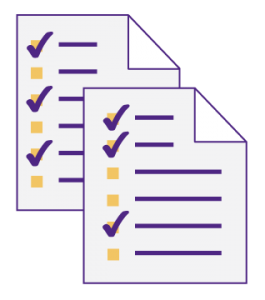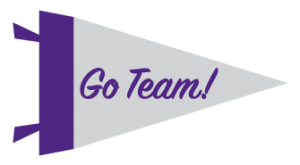Lori Goodson, Editor
Mary Hammel, Technical Editor
Category: October 2017
Stay a Step Ahead on Grading and Paperwork
 Amid all the new things you’re learning—bell schedules and assembly procedures, as well as the names of 135 or so of your very favorite students and a batch of new computer passwords and codes, one important area you will need to become comfortable with is record keeping.
Amid all the new things you’re learning—bell schedules and assembly procedures, as well as the names of 135 or so of your very favorite students and a batch of new computer passwords and codes, one important area you will need to become comfortable with is record keeping.
As a new teacher, you’re probably realizing all the requirements for your new position, but good record keeping will save you plenty of headaches through the year. Absences, tardies, missing assignments, grades, and communication with students’ families and guardians are just a few of the details you’ll need to record. So let’s look at some suggestions that, hopefully, will make your daily teaching duties a little easier!
Communication Log: Communication—with families and guardians, colleagues, administrators, education leaders, and community members—is so important, and in the midst of lesson plans, activities, and classroom management, it can easily get lost.
IDEAS:
- Consider recording dates you attempted to contact (by phone or through email) parents/guardians and dates you successfully contacted parents/guardians regarding specific student concerns or successes. Make a brief note of the topic of communication and any decisions or input.
- Record dates/copies of student behavior referrals.
- Record ideas/suggestions gathered through your various communications.
- File family/guardian emails in a separate folder on your computer for easy access.
Attendance: When you’re dealing with 30 or more students, keeping track of attendance can be a daunting task! While you’ll probably have a computer program that your school uses to record students who are absent or tardy, you’ll probably want to include your own personal system, as well.
IDEAS:
- Develop a way to organize papers and other materials that absent students will need when they return.
- Try using a folder posted on a board or in a designated spot and placing any materials in it with specific students’ names on them. If you teach multiple classes, clearly label a folder for each class.
- Keep a list of students and their missing assignments. Many grading programs will generate these for you. Consider printing out two copies—a master copy for you and then a copy of each student’s missing assignments. Hand out a list of missing assignments to each student; handing these out on Fridays can be especially helpful to give them the weekend to address their missing assignments.
Grades: Keeping up with the grading and maintaining accurate grade sheets are always a concern for teachers—new and veteran teachers alike. Here are some suggestions; also check out our list of 10 Assessment Tips in this issue.
IDEAS:
- Keep a basket on your desk so students will know where assignments go when they’re completed.
- Try to grade papers—and empty that basket—by the end of the day on Fridays. What doesn’t get taken care of by then probably needs to go home over the weekend. Try to always start your week with an empty assignment basket for a fresh start to your week.
- If you teach more than one class, have a folder for each class where you place assignments to be returned after they’ve been assessed.
- Group assignments and enter grades by the class, if possible. As late assignments come in, mark those students’ names off the missing assignments list.
- Just to be safe…periodically, especially if it has been a busy assignment time, print off the whole-class grade sheet and file in a secure place. If technology would fail (when you least expect it), you will have a backup.
And Get Ready for Your Own Assessment
Hopefully, you have visited with your administrator about the formal evaluations. He or she can share the number of times you’ll be formally observed and the process.
Usually, you’ll have a pre-evaluation meeting, followed by the formal observation. After that, you’ll likely have a formal meeting. For this part, make sure you complete any required forms. In many districts, you’re required to provide a detailed lesson plan (and possibly a one-page, brief version), seating chart, a brief narrative regarding the class, and copies of any materials you use during the class. Include anything to help him or her “see” what’s going on in the class—and anything to simplify the process.
You’ll probably find that, if you’ve built a relationship with your students, they’ll step up during the formal observation to help you succeed. Be sure to appreciate how they jump in to respond to your questions, sit still when they need to be sitting still, etc. We’ve rarely see students (big or small) misbehave intentionally during a formal observation.
For the pre-observation and post-observation meetings, share strengths and weaknesses. A good administrator will listen to your self-evaluation and help you strengthen the areas you believe need some help. Much like you work with your students, he or she should be eager to help you succeed.
As a new teacher, you will find an administrator may visit your room anytime. (It’s even been known for a superintendent to make an impromptu visit to a classroom now and then, as well.) The best way to prepare for that is to make sure you’re ready every morning. Often, it’s best to take a few minutes at the end of the day to set up for the following day’s classes. Get your materials photocopied, organized, etc., so you don’t have to do any searching as the students arrive in your classroom the next morning.
These evaluations early in your career are extremely typical. If anything, consider it a sign of support—that your administrators want to make sure you’re doing well in your classroom and want to know if there are steps they can take to help you be successful.
After the first year, the pressure of evaluations eases up quite a bit—especially if you’ve proven you’re qualified and comfortable in the role of a classroom teacher.
Am I right, second-year teachers? Are you remembering the butterflies of that first evaluation? Be sure to email and share some of your thoughts!
Come on Back for Homecoming!
It’s almost time for Homecoming, and we’d love to have you return to the K-State campus! It’s a 102-year-old tradition, and you should be a part of it.
The theme for this year is “Purple Pride Worldwide.” As always, there will be lots to do throughout Homecoming Week, Oct. 15-21, highlighted by the homecoming parade and a pep rally. And don’t forget the football game Oct. 21, with K-State taking on the University of Oklahoma.
Here are a couple of links to more specifics about the events:
And, in case you’ve forgotten: WEAR LOTS OF PURPLE!
In the Classroom: Rachel Harmon

Name: Rachel Harmon
School district: USD 214 Ulysses, Ulysses High School
City/State: Ulysses, KS
Class/content area taught: Family & Consumer Science = Culinary Essentials, Human Growth & Development, Baking & Pastry, Family Studies, Nutrition & Wellness; FCCLA adviser; volleyball coach
What are you most excited about with your new career? Interacting with students.
What you enjoy most about teaching: The students.
In what ways has your school/district supported you? Send me to professional development, answer questions, local mentor, allowed me to participate in ECAL KSU research project/classes.
What are some specific things you believe KSU especially helped prepare you for your new career? KSU TELRN program. Allowed me to earn my education credentials as a grad student by giving me credit for my BA from 25 years ago and only having to take the education courses. Allowed me to use my background and experiences when creating class projects. It was compact and fast-paced.
Background: I earned a BA in Radio/Television from KSU in 1991. My first career was producing educational videos but injuries resulted in a career change. Since I’d been producing educational videos for use in schools and teaching and judging photography in 4-H for 25 years, transitioning to teaching seemed the logical path to follow. I’ve also been a volleyball and basketball official for that long as well has being a club volleyball coach so I was familiar with other aspects of education. I found myself teaching players about each game by explaining the rules as needed while on the court. My extensive background in 4-H as both a member and an adult volunteer prepared me for the FCS content. I am also endorsed in English, Social Studies and Journalism. While a video producer I earned 10 Telly Awards and currently I’m a member of the Telly Awards Silver Council, which judges the competition’s entries. I think my experiences in business and life in general are advantageous because I can use real-world examples during class discussions and I can pull out proof if I need it. Coming to Ulysses felt like coming home because I lived in southwest Kansas for 10 years, during the 90s. Many of the same people are still in the area.
Suggestions/encouragement for new teachers: Take a deep breath. Ask for help. Let your mentor, principal, etc., know if you’re feeling overwhelmed. They’ll help you because they want to keep you!
Just the Facts
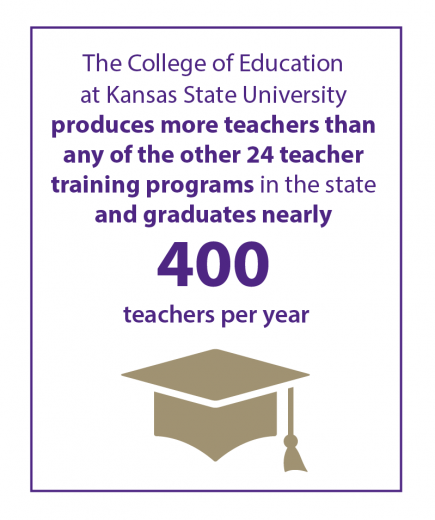
Those Other Duties Mean a Lot to Your Students
 Outside your classroom, you’ll find that you’re asked, or possibly required, to take on other duties around your school. Some of the more common tasks: bus duty (before and/or after school), gym supervision (before and/or after school), lunch supervision, and recess. Plus there are all the club sponsorships available at the various grade levels.
Outside your classroom, you’ll find that you’re asked, or possibly required, to take on other duties around your school. Some of the more common tasks: bus duty (before and/or after school), gym supervision (before and/or after school), lunch supervision, and recess. Plus there are all the club sponsorships available at the various grade levels.
Before you say no—or at least grumble a little about it—look at the opportunities these extra duties provide.
At the middle level, you might find yourself supervising bus duty; that can give you a chance to hang around the elementary students as they leap off the last step on the bus, headed home after a busy day. You may end up tying a very small shoe now and then or helping adjust a tiny mitten in the wintertime, but you’ll also flash back to your own elementary school days…and remember just where your own students came from not so many years ago.
At the elementary level, you may get to see some of your students bounce into their parents’ arms at the end of the school day—bubbling about what they did in your class today.
At the high school, the bubbling may be minimal, but you’ll be in a more relaxed atmosphere as your students climb into their cars and head out for the day.
Lunch duty can provide an opportunity for you to mingle with the student body—some students you may not even have in class. It’ll give you a chance to visit with them—about food, interests, and…yes…even school-related matters.
All of these opportunities can be powerful relationship builders for you and your students, especially when you’re a new teacher trying to make connections and get comfortable in the environment.
Make the most of them.
EdCats Support Just for You
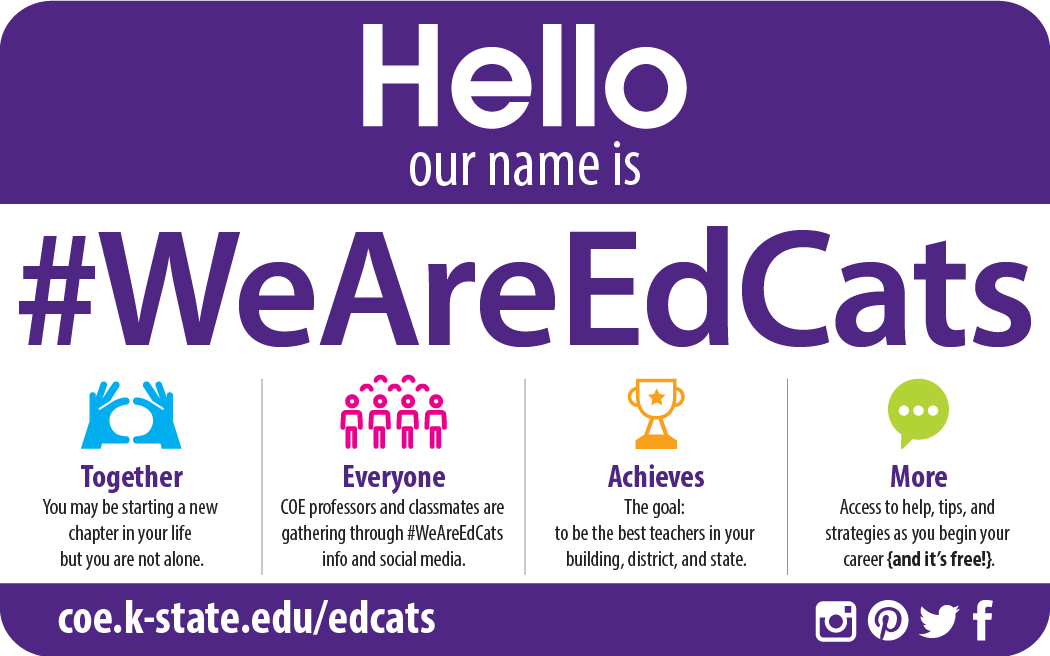 Have you checked this out yet?
Have you checked this out yet?
We want to help beginning and early career teachers like you thrive in your career! Check out #WeAreEdCats for teaching tips and to stay in touch with the COE! Check out the website at coe.k-state.edu/edcats.
Just Ahead
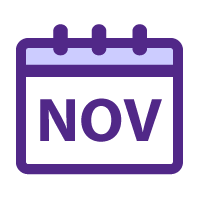 Don’t look now, but fall is quickly shifting into winter. Next month, we’ll offer some ideas to get you prepared as you move into the second quarter of the school year.
Don’t look now, but fall is quickly shifting into winter. Next month, we’ll offer some ideas to get you prepared as you move into the second quarter of the school year.
- Fantastic online classroom resources…from some of your favorite KSU professors
- Ways to celebrate the holidays and value your classroom’s diversity
- Our quick guide to faculty meetings
Your COE Family Wants to Hear From You
![]() Do you have a question about classroom procedures? Or a suggestion for a topic we should address in Before the Bell? Want to add your name to our mailing list? Or provide a different email for our mailing list? Or, why don’t you send us a photo of you at work in your classroom!
Do you have a question about classroom procedures? Or a suggestion for a topic we should address in Before the Bell? Want to add your name to our mailing list? Or provide a different email for our mailing list? Or, why don’t you send us a photo of you at work in your classroom!
Early-career teachers, feel free to jump in and offer suggestions to those who are following your career choice!
We’d love to hear from you, so please email us at lagoodson@k-state.edu.
Go, COE Cats!
